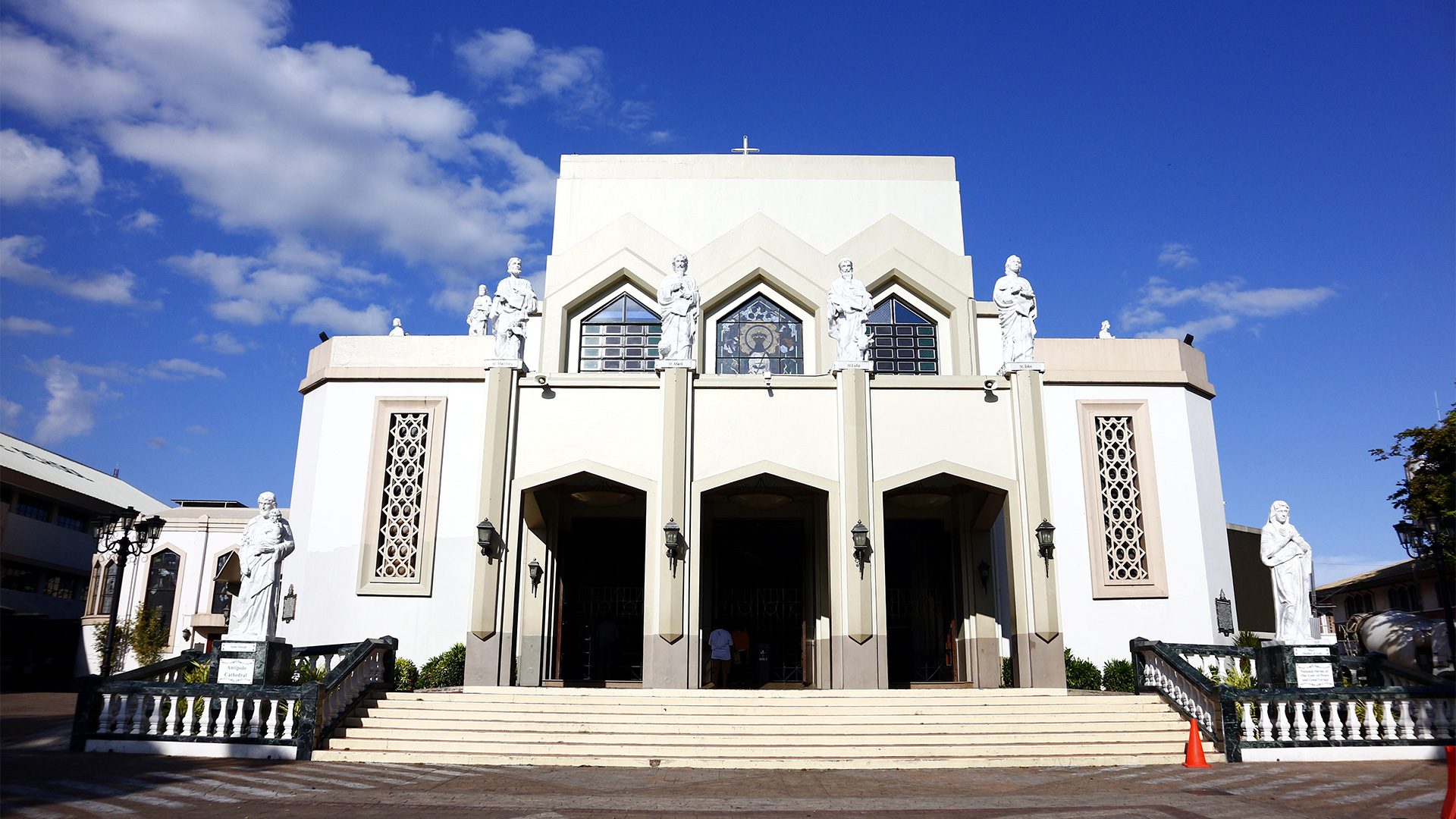SUMMARY
This is AI generated summarization, which may have errors. For context, always refer to the full article.

MANILA, Philippines – The National Shrine of Our Lady of Peace and Good Voyage, popularly known as Antipolo Cathedral, will officially assume its new status as an international shrine on March 25.
The official Facebook page of the Roman Catholic Diocese of Antipolo announced that the Holy See released the papal decree declaring the elevation of Antipolo Cathedral as an international shrine – the first in the Philippines and in Southeast Asia, and the 11th worldwide.
According to a press release by the Catholic Bishops’ Conference of the Philippines (CBCP), the Vatican approved the petition to grant Antipolo Cathedral that particular privilege in June 2022.
Located at the center of Antipolo City’s town proper, the Antipolo Cathedral has a 450-year-old history and is a popular destination for devotees and tourists alike.
Here’s what you need to know about the country’s first Roman Catholic international shrine.
Four-century history
According to Antipolo Cathedral’s website, the first church in what is now Antipolo City was built by the Society of Jesus under Reverend Juan de Salazar.
The church was meant to house the image of Nuestra Señora dela Paz y Buen Viaje or Our Lady of Peace and Good Voyage, which arrived in the Philippines on June 26, 1626.
It was originally planned to be built on a different plot of land but was built on its present location, the site of a tipolo tree (Artocarpus blancoi), where the image of Our Lady of Peace and Good Voyage was found after “mysteriously vanishing several times.”
The church was completed in 1632 but it suffered severe damage several times throughout its four-centuries-long history and was rebuilt several times, too.
In 1639, the church was set on fire during the Chinese uprising. It was restored afterwards but was damaged again by the 1645 Luzon earthquake, and two other earthquakes in 1824 and 1863.
During World War II, the church was destroyed by Allied bombardment meant to liberate the area from Japanese imperial control.
According to the cathedral’s website, former First Lady Aurora Quezon and Antipolo parish priest Francisco Avendano headed a fundraising committee to build a new church. Architect José L. de Ocampo was commissioned to design the new shrine, which was completed in 1954.
On January 14, 1954, the CBCP declared the new Antipolo Church as the National Shrine to Our Lady of Peace and Good Voyage.
“The church was elevated to the status of cathedral on June 25, 1983, upon the canonical erection of the Diocese of Antipolo,” says the Antipolo Cathedral’s website.
Pilgrimage site
The Antipolo Cathedral is a popular pilgrimage site, visited by many devotees paying reverence to Our Lady of Peace and Good Voyage.
Even the Philippine national hero José Rizal visited the shrine as a boy with his father, Francisco Mercado, on June 6, 1868, according to the book Rizal’s Unfading Glory written by Jesús María Cavanna y Manso.
According to Antipolo Cathedral’s website, the pilgrimage season for the cathedral starts on the first Tuesday of May and ends on the first Tuesday of July. The website also says that the shrine attracts “millions of pilgrims annually” during this season.
The pilgrimage season is initiated by the annual “Pagdalaw ng Ina sa Anak” (Visit of the Mother to her Son), a motorcade bearing the image of Our Lady of Peace and Good Voyage from Antipolo Cathedral to the Quiapo Church where the Black Nazarene is enshrined.
During this annual event, a “welcome Mass is held in Quiapo Church at 9 am and a farewell Mass is held at 6 pm,” according to the Cathedral’s website.
Afterwards, a penitential walk, with a distance of around 33 kilometers, from Quiapo Church to the Antipolo Cathedral starts.
The arrival of the image of Our Lady of Peace and Good Voyage at the Antipolo Cathedral is celebrated by a Mass at 5 am on the 1st day of May.
International shrine status
According to the Code of Canon Law, only the Holy See can confer an international shrine status to a diocesan shrine.
A CBCP press release published in June 2022 said the Vatican approved on June 18, 2022, their petition to grant the shrine international status.
The CBCP press release also said the Antipolo Cathedral is the “third international shrine in Asia after the Saint Thomas Church Malayattoor in India and the Haemi Martyrdom Holy Ground together with the Seoul Pilgrimage Routes in South Korea.”
The Antipolo Cathedral is also the first Marian international shrine in Asia. – Rappler.com
Add a comment
How does this make you feel?










There are no comments yet. Add your comment to start the conversation.